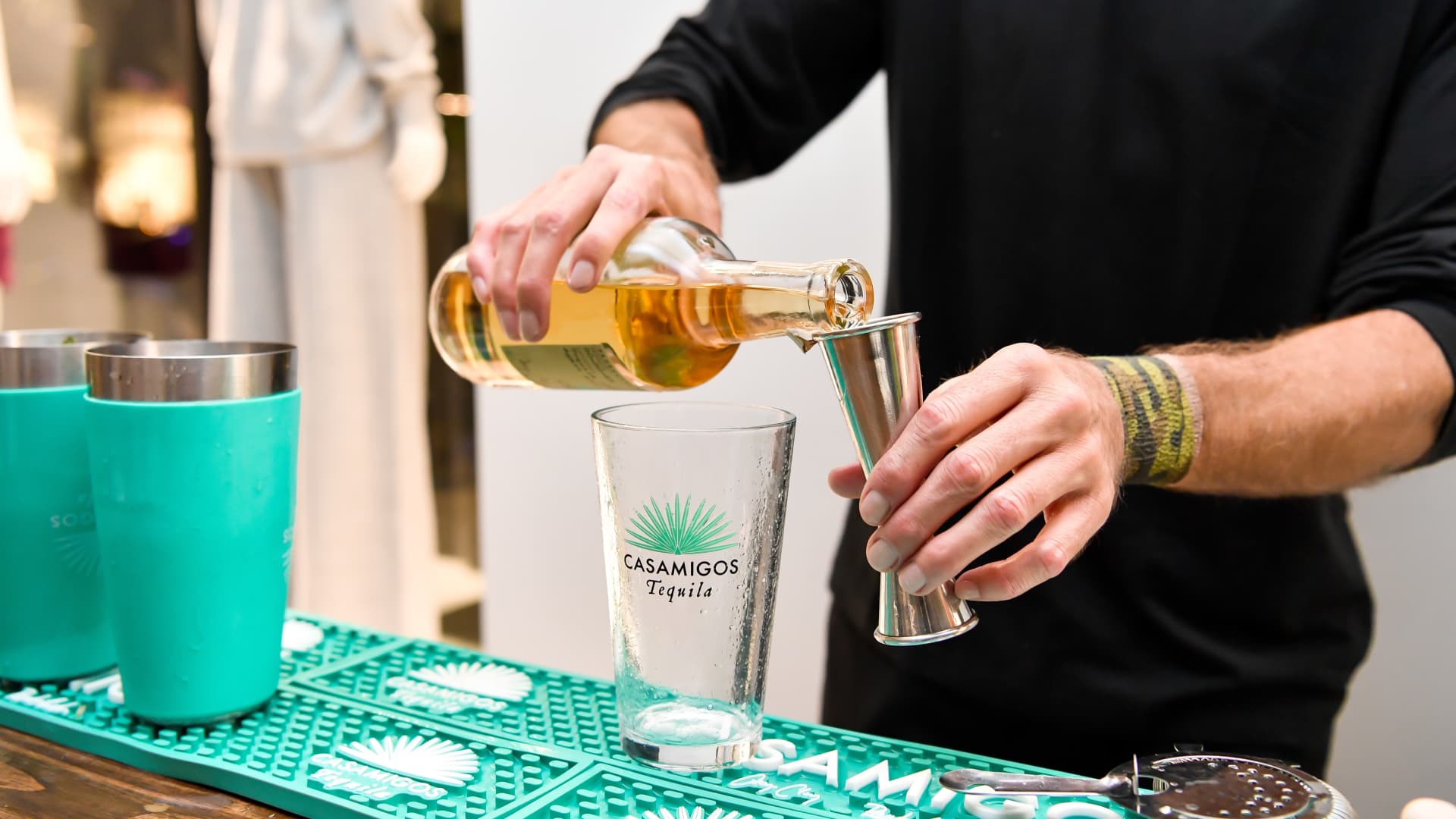At the opening party for Alo Miami in Miami on December 16, 2021, a talented bartender showcased their creativity by crafting specialty cocktails using Casamigos. This event symbolizes the spirits industry’s triumph over economic challenges and its ability to adapt to changing consumer preferences, as it gradually overtakes the dominance of beer.
According to the Distilled Spirits Council of the United States, the spirits industry’s revenue market share has grown from 28.7% in 2000 to 42.1% in 2022, surpassing beer for the first time ever. However, the beer market still holds a close 41.9% share.
During the council’s 50th anniversary conference in Chicago, industry leaders gathered to discuss the key trends driving growth and challenges within the industry. Despite obstacles such as supply chain issues and high inflation, the beverage alcohol industry has much to celebrate.
Chris Swonger, the president and CEO of DISCUS, expressed his admiration for the industry’s success and emphasized the importance of perseverance in staying ahead of the competition and sustaining positive trends.
Here are some noteworthy trends identified by industry experts:
1. Celebrity brands are making a splash in the spirits industry as more and more celebrities invest their time and money into this business. Celebrities from various fields, including movies, sports, and fashion, are endorsing brands, participating in the distillation process, and forming partnerships within the industry. These collaborations have proven to be highly profitable. George Clooney’s sale of Casamigos for $1 billion to Diageo in 2017 has inspired others to follow suit. Actor Mark Wahlberg, who recently launched the tequila brand Flecha Azul, sees the success in the celebrity tequila space and aims to be competitive by focusing on the quality of his product.
2. Premiumization is driving the growth of luxury spirits and ready-to-drink (RTD) cocktails. The pandemic has led consumers to develop a taste for higher-quality spirits and become accustomed to enjoying cocktails outside of bars through RTD options. Luxury brands have experienced a 4% growth in 2022 compared to the previous year. Tequila sales have surged by 21%, and American whiskey sales have increased by 19%. The popularity of pre-mixed cocktails, including spirit-based RTD beverages, has also risen significantly, with the category witnessing a 35.8% growth in sales to reach $2.2 billion in 2022.
3. No- and low-alcohol drinks have become sought-after alternatives among consumers who are looking to reduce their alcohol consumption for health or personal reasons. Major alcohol companies have jumped on this trend by introducing a range of no- and low-alcohol options. In 2022, these alternatives experienced a volume growth of over 7% across key global markets. Younger generations, in particular, are drinking less but with more intention. Nonalcoholic options are now socially acceptable and even the norm in some segments of the “sober curious” movement.
4. Conscious consumers value brands that align with their values and prioritize sustainability, community contributions, and diversity. Companies are recognizing this demand and are emphasizing their efforts in these areas. Eco-friendly packaging and locally sourced ingredients have become more prevalent in the spirits industry. Moreover, brands are making significant strides in promoting diversity within their organizations and supporting marginalized communities. Consumers are becoming more vocal about holding brands accountable for their practices.
5. Supply chain disruptions and inflationary pressures continue to pose challenges for the industry. Rising costs for glass bottles and freight shipping, among other factors, have impacted companies. This has resulted in price increases, which consumers have absorbed thus far. While the lifting of EU and UK retaliatory tariffs on American whiskeys has provided some relief, it is crucial to permanently remove these tariffs to maintain momentum in the spirits industry. Failure to reach a deal could result in a 50% EU tariff on all American whiskeys starting in January.
In conclusion, the spirits industry is thriving and adapting to consumer demands. From celebrity endorsements to premiumization, no- and low-alcohol options, conscious consumerism, and supply chain challenges, industry leaders are committed to maintaining growth and delivering exceptional products to consumers.
Denial of responsibility! VigourTimes is an automatic aggregator of Global media. In each content, the hyperlink to the primary source is specified. All trademarks belong to their rightful owners, and all materials to their authors. For any complaint, please reach us at – [email protected]. We will take necessary action within 24 hours.


